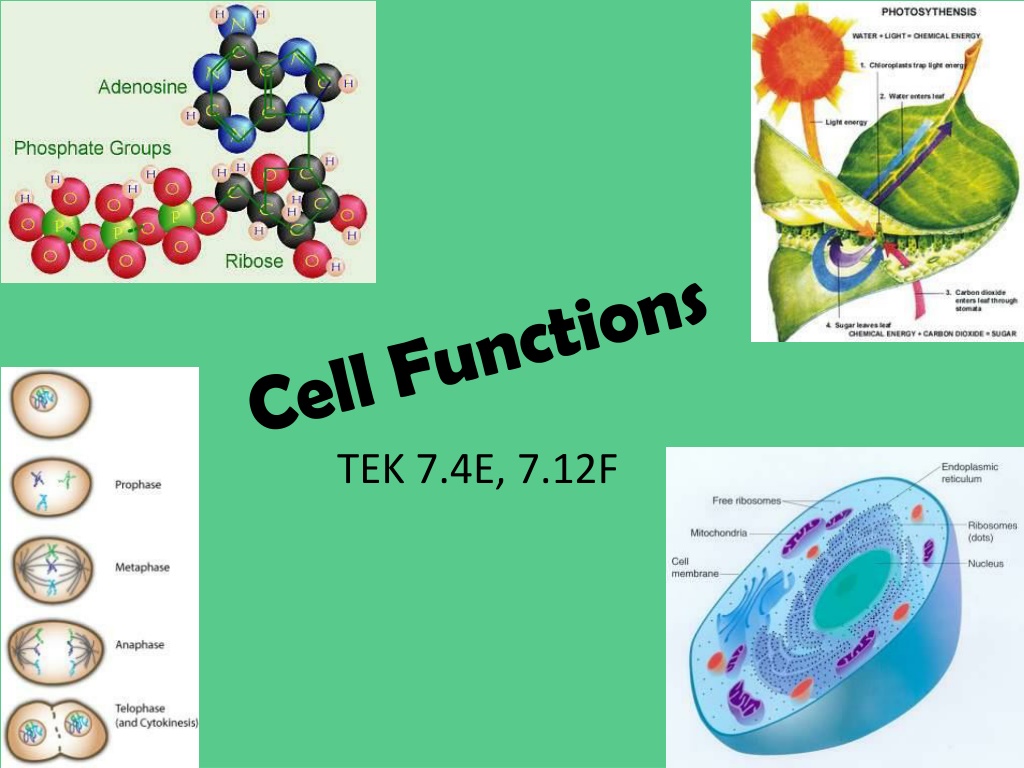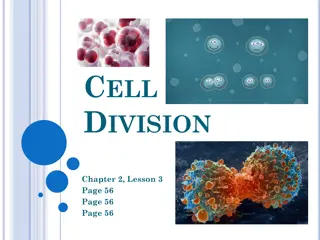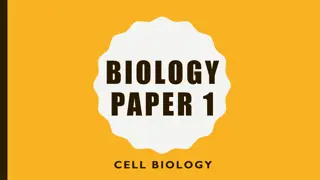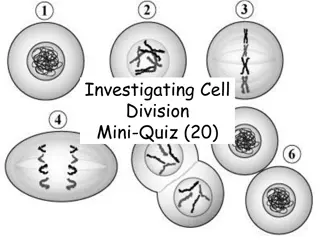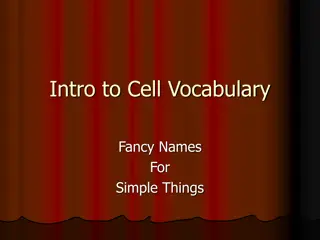Exploring Cell Biology: Functions, Metabolism, and Division
Delve into the fascinating world of cell biology, where you'll learn about the diverse functions of cells in different organisms, the essential role of metabolism in providing energy, and the intricate processes of cell division such as mitosis. Discover how cells conduct nerve impulses, produce red blood cells, and utilize energy for various functions. Explore the similarities and differences between photosynthesis and cellular respiration, as well as the importance of ATP as a main energy source. Uncover the stages of mitosis and understand how cells replicate and divide to support growth, replenishment, regeneration, and reproduction.
Download Presentation

Please find below an Image/Link to download the presentation.
The content on the website is provided AS IS for your information and personal use only. It may not be sold, licensed, or shared on other websites without obtaining consent from the author. Download presentation by click this link. If you encounter any issues during the download, it is possible that the publisher has removed the file from their server.
E N D
Presentation Transcript
http://www.mymcat.com/w/images/3/39/Mitosis.jpg TEK 7.4E, 7.12F
Cells and their functions All organisms are made up of cells which are parts of all the body s functions There are many different types of cells with completely different functions Nerve cells conduct nerve impulses Cells in bones produce red blood cells However, all cells use energy, get rid of waste, and contain genetic material
Metabolism All cells need energy to operate Metabolism is the chemical process by which cells get energy from food Breaks down complex molecules so that the energy released can be used by various parts of the body
Photosynthesis vs. Cellular Respiration Just like the plant process of photosynthesis, the process of cellular respiration involves converting various components (such as glucose and oxygen) into usable energy. How Food is Converted into Energy Cellular Respiration Photosynthesis
ATP Stands for Adenonsine Triphosphate Consists of adenine and 3 phosphate groups Main form of energy that cells use Mainly generated in the mitochondria
Cell Division Two different processes Mitosis Meiosis Necessary for: Growth Cell replacement (skin, red blood cells) Regeneration Reproduction
Mitosis 1 division produces 2 daughter cells Daughter cells are identical to mother cell Watch an Animation of Mitosis
Stages of Mitosis Interphase the period when the cell is not undergoing division but has replicated DNA Prophase Nuclear membrane is not visible, spindle has moved to opposite sides of cell Metaphase spindle fibers attach themselves to the chromosomes, which are lined in the middle of the cell Anaphase spindle pulls chromosome apart Telophase chromosomes are pulled to different sides by spindles and nuclear membrane begins to form around them
Meiosis 2 divisions occur 4 non-identical daughter cells Like in mitosis, DNA is only duplicated once Daughter cells have half the number of chromosomes of parent cell Occurs only in reproductive organs
Mitosis vs. Meiosis Mitosis Meiosis No. of divisions A single division resulting in two cells. Two divisions resulting in four cells. Events in Prophase Chromosomes do not associate with each other. Paring of homologous chromosomes. Events in metaphase Individual chromosomes are arranged on the equator of the spindle. Pairs of homologous chromosomes are arranged on the equator of the spindle. Events in anaphase Centromere splits and chromatids separate. The chromatids stay joined and the homologous chromosomes separate. Chromosome number in daughter cells Daughter cells have the same number of chromosomes. Daughter cells have half the number of chromosomes. Genetic variation in daughter cells Daughter cells are genetically identical with each cell and with the parent cell. Daughter cells are genetically different with each cell and with the parent cell. Occurrence May occur in all parts of the body. Meiotic division is restricted to the gonads.
Removing Waste Lysosome found in cytoplasm, break up large molecules into smaller ones Cell membrane allows nutrients in while dumping waste out Exocytosis active transport; release of cellular substances out of membrane
